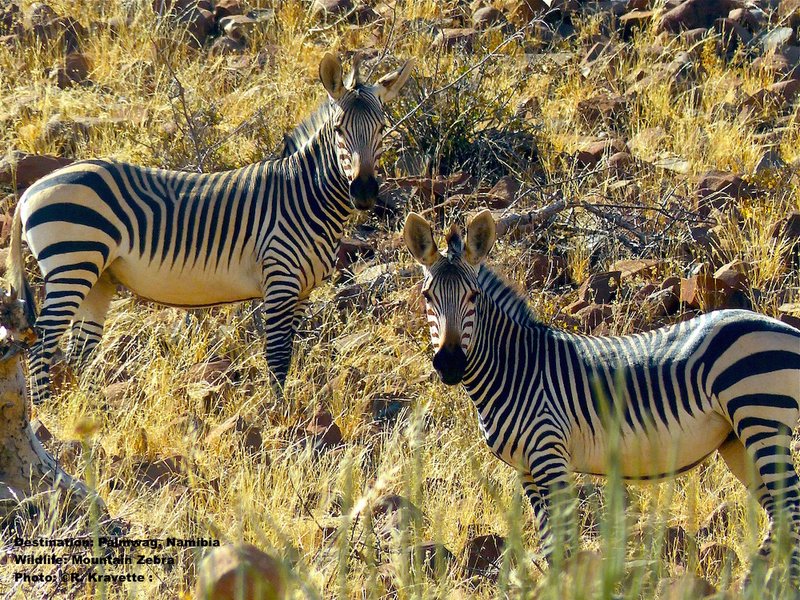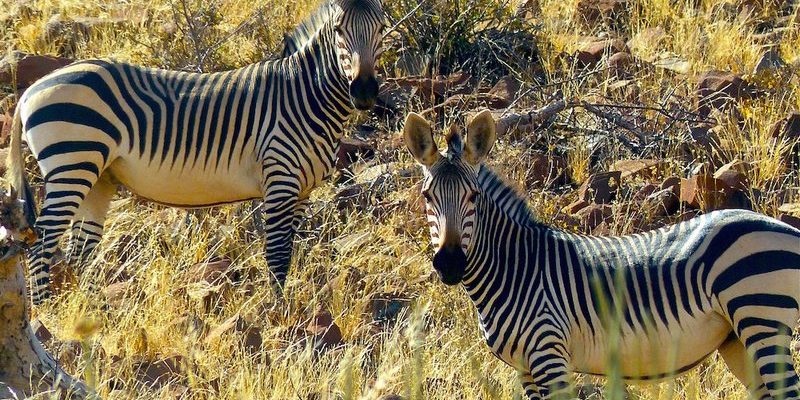
Imagine you’re sitting with a friend over coffee, chatting about wildlife. You might find yourself discussing the differences between mountain zebras and other types like plains or Grevy’s zebras. As we dive into this topic, you’ll understand the truth behind common myths about mountain zebras and learn what makes them special. By clearing up some of this confusion, we can appreciate these magnificent animals even more.
Myth
One of the biggest misconceptions about mountain zebras is that they are simply a different version of the common zebra. While all zebras belong to the same horse family, mountain zebras stand out in several notable ways. For starters, they are generally smaller than their plain zebra relatives and have a more compact body.
Mountain zebras also have distinct facial patterns. You might notice that their stripes are thinner and more closely spaced, especially around the face and neck. This gives them a unique look that is quite different from the broader stripes seen on plains zebras. Their manes are also erect, standing straight up rather than falling over, which is often the case with other zebra types.
Differences in Habitat
Another key difference is their habitat. Mountain zebras, as their name suggests, prefer rocky, mountainous regions rather than open grasslands. They are well adapted to steep terrains, where they can graze on tough grasses and shrubs. This adaptability is crucial for their survival in harsh environments.
So, while they share a family resemblance with other zebras, mountain zebras have withstood the test of time and evolved to thrive in specific habitats. That’s why we can’t just lump them together with all other zebra species.
Myth
You might hear people say that mountain zebras are endangered solely due to overhunting. While hunting has indeed impacted their populations, it’s not the only factor at play. Their populations began to decline significantly due to habitat loss as well.
As human settlements expand, the space mountain zebras need to roam and graze shrinks. Urban development, agriculture, and farming have taken over many of their natural habitats, making it a struggle for them to survive.
Conservation Efforts
Fortunately, conservation efforts are underway to help mountain zebras. Protected areas and national parks have been established to ensure they have safe environments to live and breed. Plus, many organizations are working to raise awareness about their plight and educate the public on how vital it is to protect these unique animals.
So, while hunting contributed to their decline, it’s just one piece of a much larger puzzle. Understanding these complexities can help us appreciate the challenges mountain zebras face today.
Myth
Another common myth is that mountain zebras are solitary creatures. While it’s true that some zebras can be more solitary than others, mountain zebras actually tend to be social animals. They typically live in small groups called harems, which usually consist of one male and several females and their young.
This social structure plays an essential part in their survival. Being in a group helps mountain zebras protect each other from predators and enhances the likelihood of finding food. It’s fascinating to see how these social interactions create bonds and ensure the safety of the herd.
Social Behaviors
Mountain zebras have a range of social behaviors that reinforce their connections. You might spot them grooming each other or playing together, which strengthens their bonds. They communicate through vocalizations and body language, further emphasizing their social nature.
So, if you ever think of mountain zebras as loners, remember that they’re more like a close-knit family, supporting one another as they navigate their rocky habitats.
Myth
You may have heard that all zebra species can interbreed to create hybrids. This is a common belief, but it’s not entirely accurate. While it’s true that some zebras can mate with other species, mountain zebras have specific genetic and behavioral traits that make them less compatible with other types.
For instance, mountain zebras and plains zebras have different chromosome numbers, which usually means they cannot produce viable offspring together. This genetic difference is crucial in maintaining the distinct characteristics of each species.
Importance of Preservation
Understanding these genetic boundaries not only helps clarify the distinctions between zebra species but also highlights the importance of preserving their unique environments. Protecting mountain zebras ensures that they can continue to thrive in their natural habitats without the risk of losing their lineage through hybridization.
So, the next time you hear about interbreeding among zebras, remember that mountain zebras stand apart, with their own unique identity.
Myth
You might think that mountain zebras are merely smaller versions of other zebras, but that’s a significant oversimplification. While they are indeed smaller and more compact, their differences go much deeper than size.
Their adaptations for mountain living include strong, sturdy legs that allow for agility and speed on rocky terrain. Their unique diet also differs from that of plains zebras; mountain zebras can consume tougher grasses and plants due to their specialized digestive system. This adaptation is crucial for survival in their specific habitats.
Unique Characteristics
Moreover, their behavior is often more cautious compared to other zebras. Mountain zebras navigate their environment with a keen awareness of potential threats, using their surroundings to hide from predators. This cautiousness reflects their need to adapt to the challenges of living in mountainous regions.
In short, mountain zebras aren’t just little zebras; they are well-adapted animals with their own set of skills and behaviors that help them thrive in a unique environment.
There you have it! We’ve tackled some of the most common myths and misconceptions about the mountain zebra, exploring what truly makes them unique. From their physical differences to their social structures, mountain zebras hold their own in the animal kingdom.
Understanding these myths helps us appreciate the complexity and beauty of mountain zebras. As we work to protect their habitats and ensure their survival, it’s essential that we share accurate information about these incredible animals. So next time you talk about zebras, remember that mountain zebras have a story worth telling!

